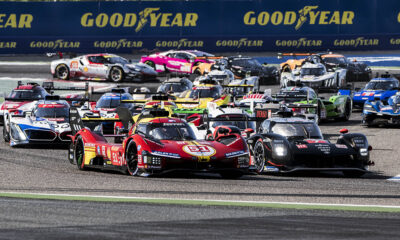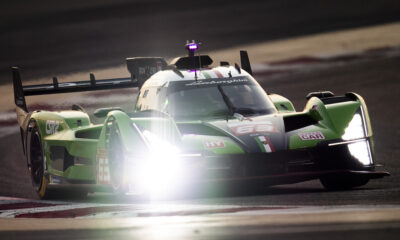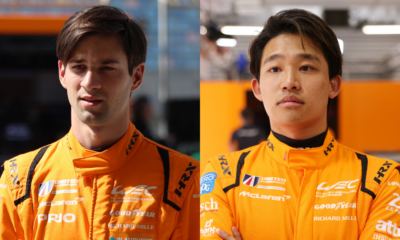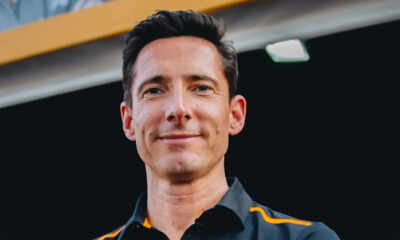Setting up a sports car racing program presents “an opportunity” for Prema to further support its established single-seater activities, according to team principal Rene Rosin.
The Italian squad joined LMP2 this year alongside its various junior open-wheel efforts that cover multiple categories including Formula 2, Formula 3 and Formula 4.
Rosin believes that adding LMP2 to the business plan — with a view to entering Hypercar in the future — enables Prema to provide a career option for any of its drivers who do not reach Formula 1.
Prema entered sports car racing in collaboration with Iron Lynx. It made its LMP2 debut at the 1000 Miles of Sebring earlier in March and finished fourth with Robert Kubica, Louis Deletraz and Lorenzo Colombo driving the No. 9 Oreca 07 Gibson.
Explaining the reasons for the LMP2 move, Rosin told Sportscar365: “It’s quite straightforward. Above what we are doing in single-seaters, it is just Formula 1.
“Unless you have a big backing behind you, Formula 1 is quite limited.
“What we can offer to drivers from single-seaters who cannot go to Formula 1, is an endurance program. What the FIA and ACO are doing with LMH and LMDh is very interesting.
“To be ready and able to attract manufacturers, we need to be in LMP2 leading the process. This is basically how the decision came to join WEC and the LMP2 program.
“[Formula 1] is not a closed door… but it’s a closed door. First of all, you have the $200 million to enter [a new team]. This is a part of why we are doing this.
“We want to learn and be competitive in LMP2. This is the target for this year, and then we see what the future will bring to us.
“It gives us an opportunity. Places in Formula 1 are quite limited. So when you finish Formula 2, what do you do? Unless you are linked to a manufacturer.
“But still, you can have the option to join LMP2 and maybe in the near future join LMH and LMDh. I think it’s a great opportunity.
“We were looking [at sports cars] a bit already since a couple of years. It was not a one-off decision, but it was something we were thinking about.”
Prema’s objective to create an option for its single-seater drivers is exemplified by its placing of the LMP2 program in a dedicated wing of its headquarters at Grisignano.
The team purchased a building adjacent to its single-seater shop and has linked the two, ensuring that management can oversee both programs while also keeping them distinct.
“This has been a big part of the job this winter,” Rosin explained.
“We made an investment on a side building where we have put the LMP2 program. Now there are two connected buildings: one side is for LMP2 and the original one is for single-seaters.
“It was on sale just across, so it was pretty easy. We needed to finish some jobs, but it was just an administrative procedure with the city and so on, to get permission to start working. But it was quite straightforward.”
Rosin admitted that “everything is new” for Prema as it arrives into sports car racing, despite its years of experience in single-seaters.
Iron Lynx is mainly providing support on the management side, while the race team has been assembled from a mixture of new recruits with LMP2 experience and staff from the single-seater program.
Prema currently has a stable of three Orecas, with two cars used for its WEC and European Le Mans Series entries and the third serving as a spare.
“We are a new [LMP2] team and we need, first of all, to put together a mix of people who were not working together [before],” Rosin said.
“Just a few come from our single-seater experience. This has been quite a difficult program, because lots of guys were already working with teams and kept working with the other teams, the competitors.
“So we decided to move some of our single-seater guys into some positions on the WEC [program] and added guys with some WEC experience.
“Of course, it is a process that we have just started. It is a long-term view. We are here to win and do the best job possible, but we know it is very early in the season and the team is new. So I have to be realistic on the targets.
“But we have tried to put together a good group of people. The people are working very well together already, without knowing each other before. It’s a part of the process: we just need time and events.”
While Prema’s pre-season testing days could be “counted on one hand” according to Rosin, the team had a strong start at Sebring and appeared competitive when going up against more established LMP2 squads such as United Autosports, WRT and JOTA.
“If you start [the season] in Europe in April, or something like that, it can be easier,” he said.
“We had to start at Sebring and ship everything in January, which was a big implication on the preparation.
“But everything is running quite smoothly. We did some hard nights in the first days, but it’s part of the job and I think everything is going in the way that we are expecting.”























